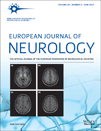EUR J NEUROL:卒中前预防性使用抗血小板药物降低重度致残率
2013-06-13 EUR J NEUROL dxy
在发生首次卒中患者中,很多患者有服用抗血小板药物预防(APT)心血管病的病史。来自法国的Y. Bejot等医师利用Dijon卒中研究中心的数据研究评价了有APT的脑卒中患者早期预后情况,发表在2013年6月的European Journal of Neurology杂志上。研究结果显示:卒中前预防性使用抗血小板药物降低重度致残率,但不降低一月及一年内死亡率。 该研究的人群为法国Dijon卒中研究
在发生首次卒中患者中,很多患者有服用抗血小板药物预防(APT)心血管病的病史。来自法国的Y. Bejot等医师利用Dijon卒中研究中心的数据研究评价了有APT的脑卒中患者早期预后情况,发表在2013年6月的European Journal of Neurology杂志上。研究结果显示:卒中前预防性使用抗血小板药物降低重度致残率,但不降低一月及一年内死亡率。
该研究的人群为法国Dijon卒中研究中心登记的1985年至2011年首次发生卒中患者。记录的统计指标包括:人口学特征、危险因素、卒中前治疗及临床信息。采用多因素分析评价入院前APT和出院时严重功能障碍、一月及一年死亡率的相关性。
在纳入的4275例患者中,有870 (20.4%)例之前有服用抗血小板药物的病史。服用抗血小板药物的患者中有233 (26.8%)例出院时的严重功能障碍,未服用的患者中有974 (28.7%)例。卒中前APT的使用与出院时较低的严重功能障碍发生率相关(调整的优势比为0.79; 95%可信区间为(CI): 063–1.00; P = 0.046),发病1月内(调整的优势比为0.87; 95%可信区间为(CI):0.70–1.09; P = 0.222)及1年内(调整的优势比为0.94; 95% CI 0.80–1.10; P = 0.429)的死亡率没有明显差异。当按照不同类别卒中进行分析时发现,APT与心源性缺血性卒中1月内的较低死亡率相关(HR: 0.65; 95% CI: 0.43–0.98; P = 0.040)。
卒中前APT与出院时较低的严重功能障碍发生率相关,除了心源性卒中外,对其他类型卒中1月时死亡率没有明显保护作用。APT对1年内的死亡率没有明显的相关性。以后研究需要观察预防性使用抗血小板药物对缺血性卒中不同的亚型的影响。

Prestroke antiplatelet therapy and early prognosis in stroke patients: the Dijon Stroke Registry.
BACKGROUND AND PURPOSE
Previous antiplatelet therapy (APT) in cardiovascular prevention is common in patients with first-ever stroke. We aimed to evaluate the prognostic value of APT on early outcome in stroke patients.
METHODS
All first-ever strokes from 1985 to 2011 were identified from the population-based Stroke Registry of Dijon, France. Demographic features, risk factors, prestroke treatments and clinical information were recorded. Multivariate analyses were performed to evaluate the associations between pre-admission APT and both severe handicap at discharge, and mortality at 1 month and 1 year.
RESULTS
Among the 4275 patients, 870 (20.4%) were previously treated with APT. Severe handicap at discharge was noted in 233 (26.8%) APT users and in 974 (28.7%) non-users. Prestroke APT use was associated with lower odds of severe handicap at discharge [adjusted odds ratio (OR): 0.79; 95% confidence interval (CI): 063-1.00; P = 0.046], non-significant better survival at 1 month [adjusted hazard ratio (HR): 0.87; 95% CI: 0.70-1.09; P = 0.222] and no effect on 1-year mortality (HR: 0.94; 95% CI 0.80-1.10; P = 0.429). In stratum-specific analyses, APT was associated with a lower risk of 1-month mortality in patients with cardioembolic ischaemic stroke (HR: 0.65; 95% CI: 0.43-0.98; P = 0.040).
CONCLUSIONS
APT before stroke was associated with less severe handicap at discharge, with no significant protective effect for mortality at 1 month except in patients with cardioembolic stroke. No protective effect of APT was observed for mortality at 1 year. Further studies are needed to understand the mechanisms underlying the distinct effects of prior APT observed across the ischaemic stroke subtypes.
本网站所有内容来源注明为“梅斯医学”或“MedSci原创”的文字、图片和音视频资料,版权均属于梅斯医学所有。非经授权,任何媒体、网站或个人不得转载,授权转载时须注明来源为“梅斯医学”。其它来源的文章系转载文章,或“梅斯号”自媒体发布的文章,仅系出于传递更多信息之目的,本站仅负责审核内容合规,其内容不代表本站立场,本站不负责内容的准确性和版权。如果存在侵权、或不希望被转载的媒体或个人可与我们联系,我们将立即进行删除处理。
在此留言








#Neurol#
58
#致残#
54
#抗血小板药#
58
#预防性#
69
#血小板药物#
65